Warrnambool Learning and Library Centre
Kosloff Architecture designed the Warrnambool Library and Learning Centre, blending modern and heritage features, maximizing natural light, and creating space for community exchange, education, and the arts.
The Warrnambool Library and Learning Centre replaces the existing local library with a much larger, brighter, and accessible space in the heart of Warrnambool’s CDB. The new space is located on the South West TAFE campus and provides facilities for both the local community and South West TAFE students and staff.
The space includes a modern indoor-outdoor café, public computers, exhibition and display areas, places to study and read, meeting rooms, a dedicated children’s area, and a games and digital media zone.
The project is the outcome of a partnership between the Victorian Government, South West TAFE and Warrnambool City Council and realizes a vision to bring together education, community and the arts.
Drawing on extensive public consultation, the project’s conceptual framework pillars were:
• Delight – Natural light, connection with the outdoors, different light levels, light as a way to measure the passing of time.
• History, Heritage and Narrative – Ensuring the design reflects local history, heritage to support the creation of a compelling design narrative.
• The Third Place – Creating space for the exchange of ideas, enjoyment, and to create and build relationships.The project included a new 3-storey contemporary building connected by a glazed linkway to the refurbished heritage-listed single-storey 1868 Orderly Room, one of nine buildings on site with heritage significance.
The linkway operates as a laneway that supports pedestrian connection through the campus, and clearly delineates the heritage-listed building from the new structure.
Another key device fitting the character of the old with the new is a “bridge” that creates an additional connection at the first-floor level where the original stage within the Orderly Room was located. Operating in a similarly performative manner, with landings offering space enough for seating or performances, the bridge also delivers views throughout both buildings.
The curved façade of the contemporary building reveals curated views over Warrnambool and the ocean, with draped precast concrete defining the architectural language of the contemporary upper levels, as well as providing a backdrop for the adjacent heritage-listed Customs House. These animated forms allow the façade to peel away from glazing elements and curate views, as well as regulating daylight and shading throughout the design.
The interiors reference both the Warrnambool CBD grid, established by Robert Hoddle, and the gridded coffered ceiling within the Orderly Room. This intentionally extends an existing architectural relationship with the city and the heritage building and serves to bind the contemporary and heritage buildings together. The grid and articulated ceiling manifests in the design throughout each new level, with differing ceiling arrangements acting as a contemporary deconstruction of the original ceiling.
The environmental impact has been minimised via adaptive re-use of materials, wherever possible, and careful selection of long-life building materials requiring minimal. Landscaping supports local diversity and the long-term development of tree avenues. Rain gardens have also been installed.
Design: Kosloff Architecture
Photography: Derek Swalwell

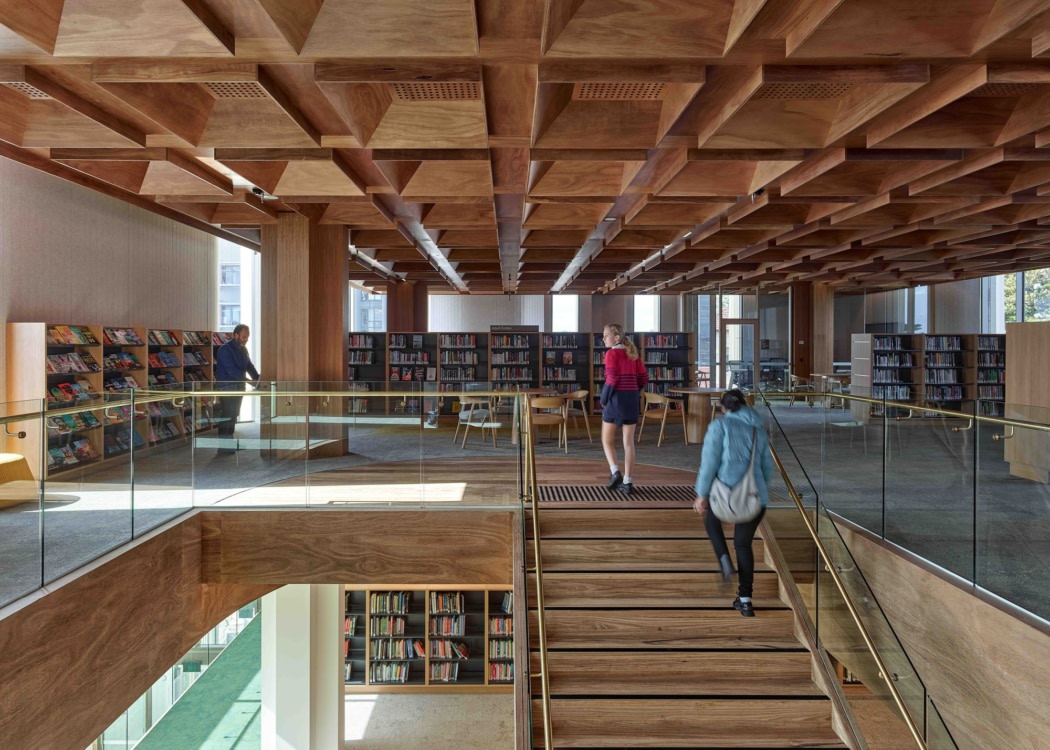
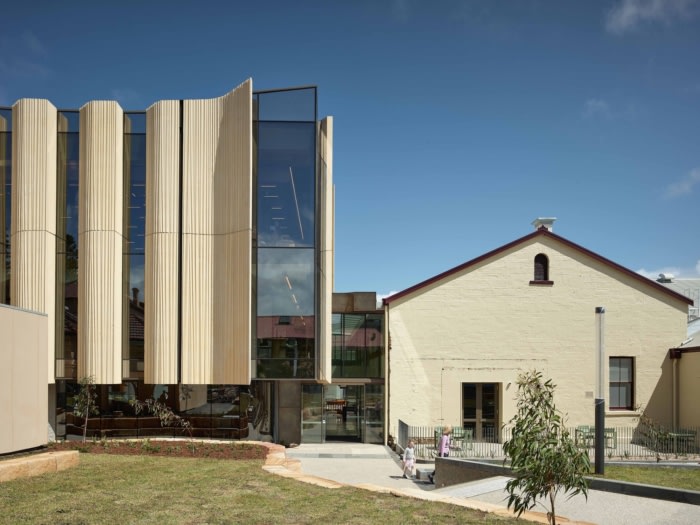

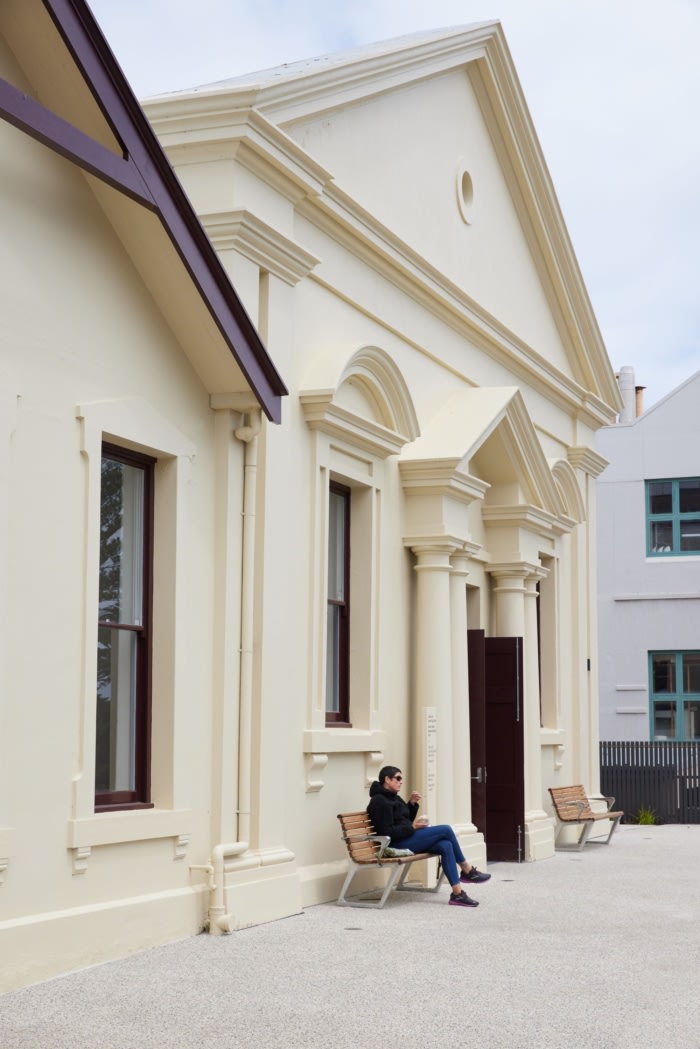
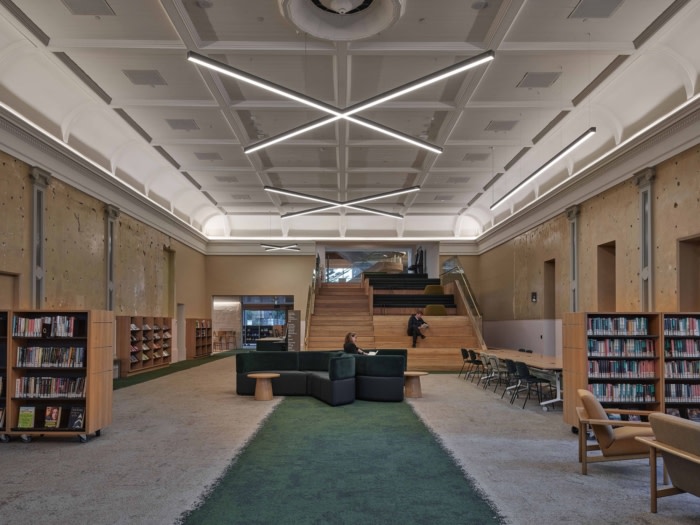
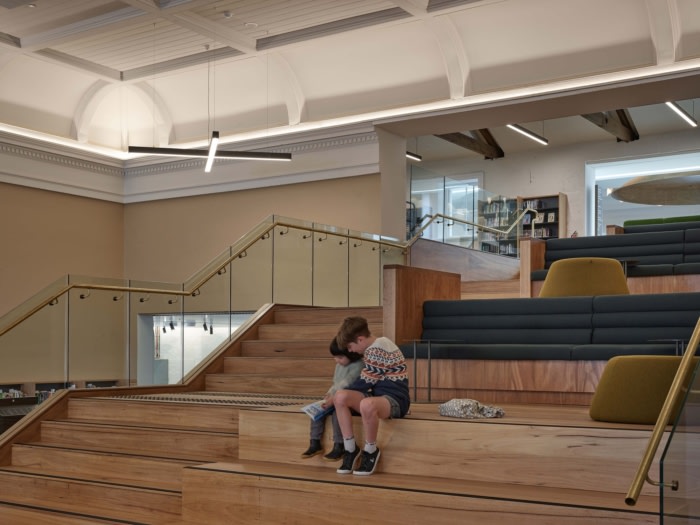

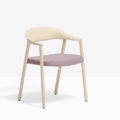
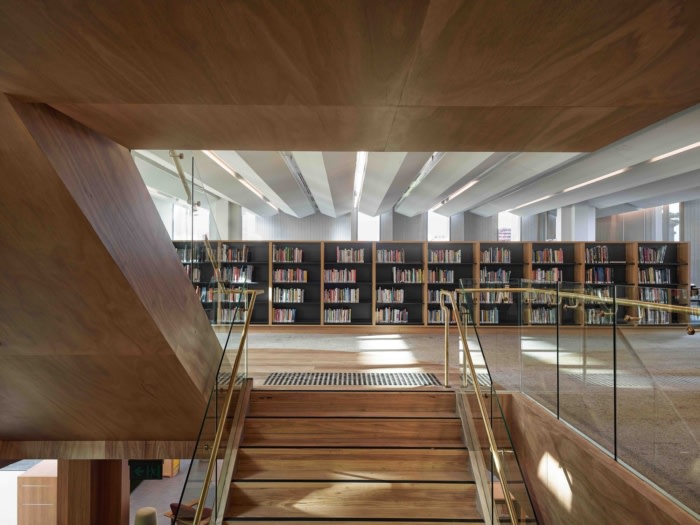
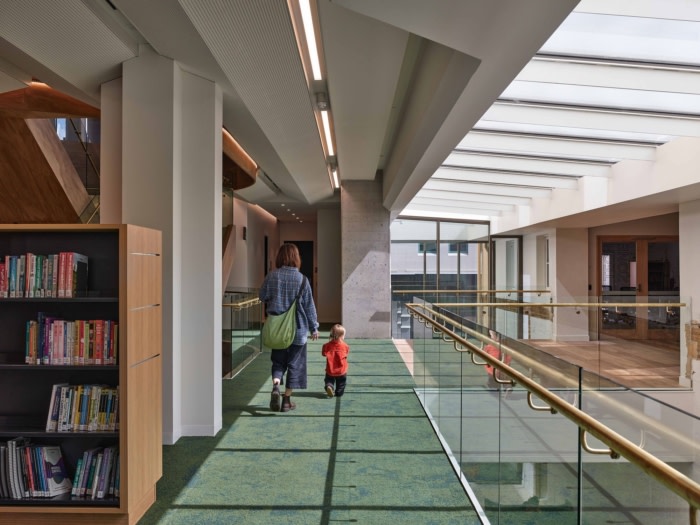
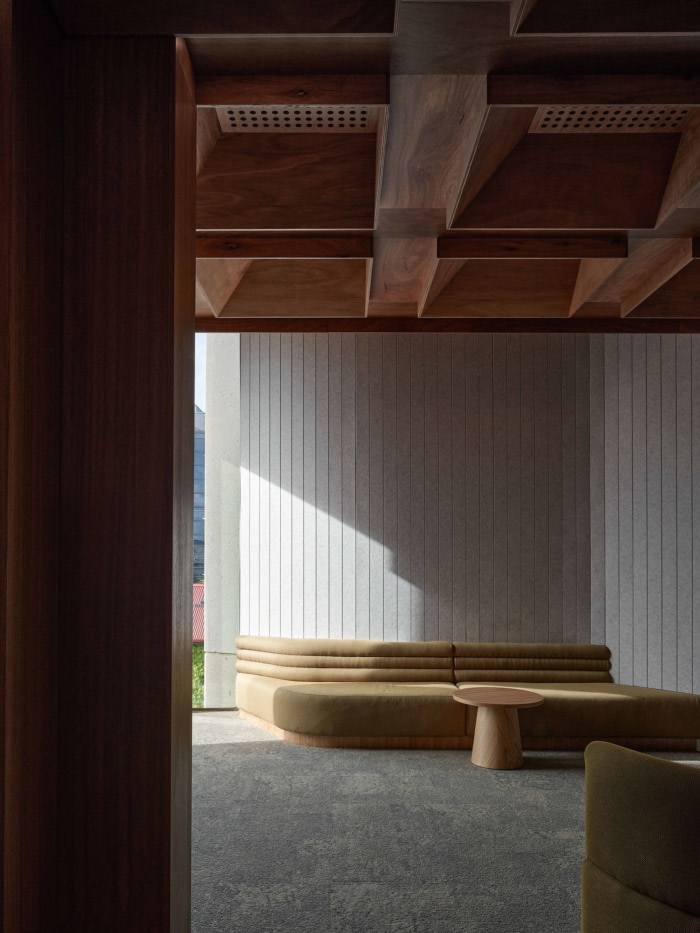
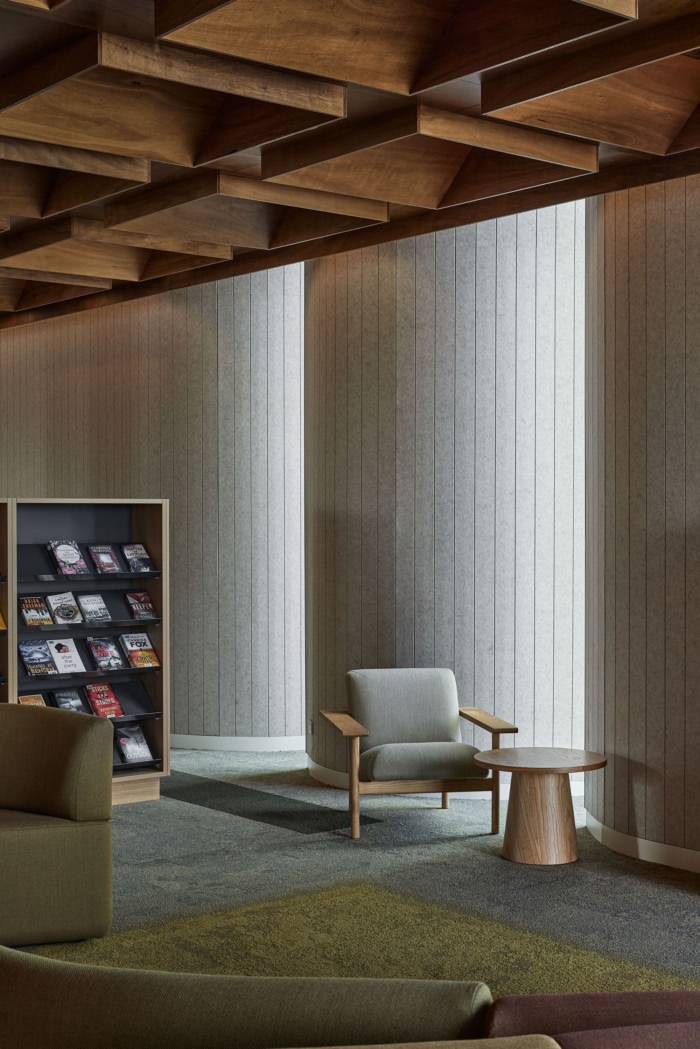




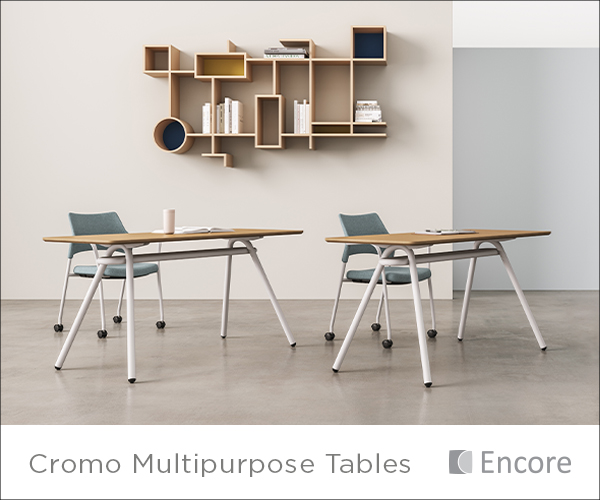
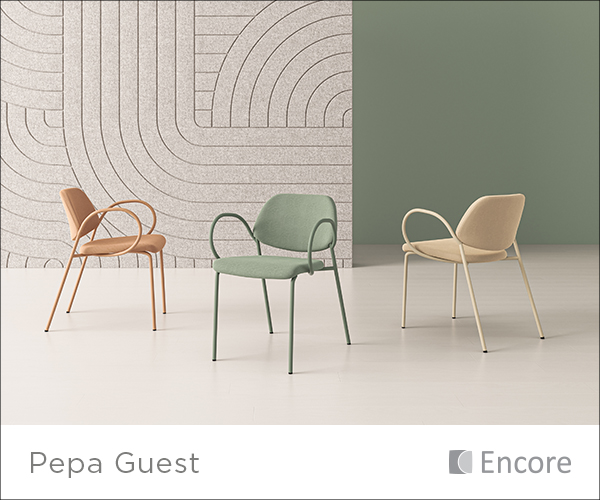






Now editing content for LinkedIn.